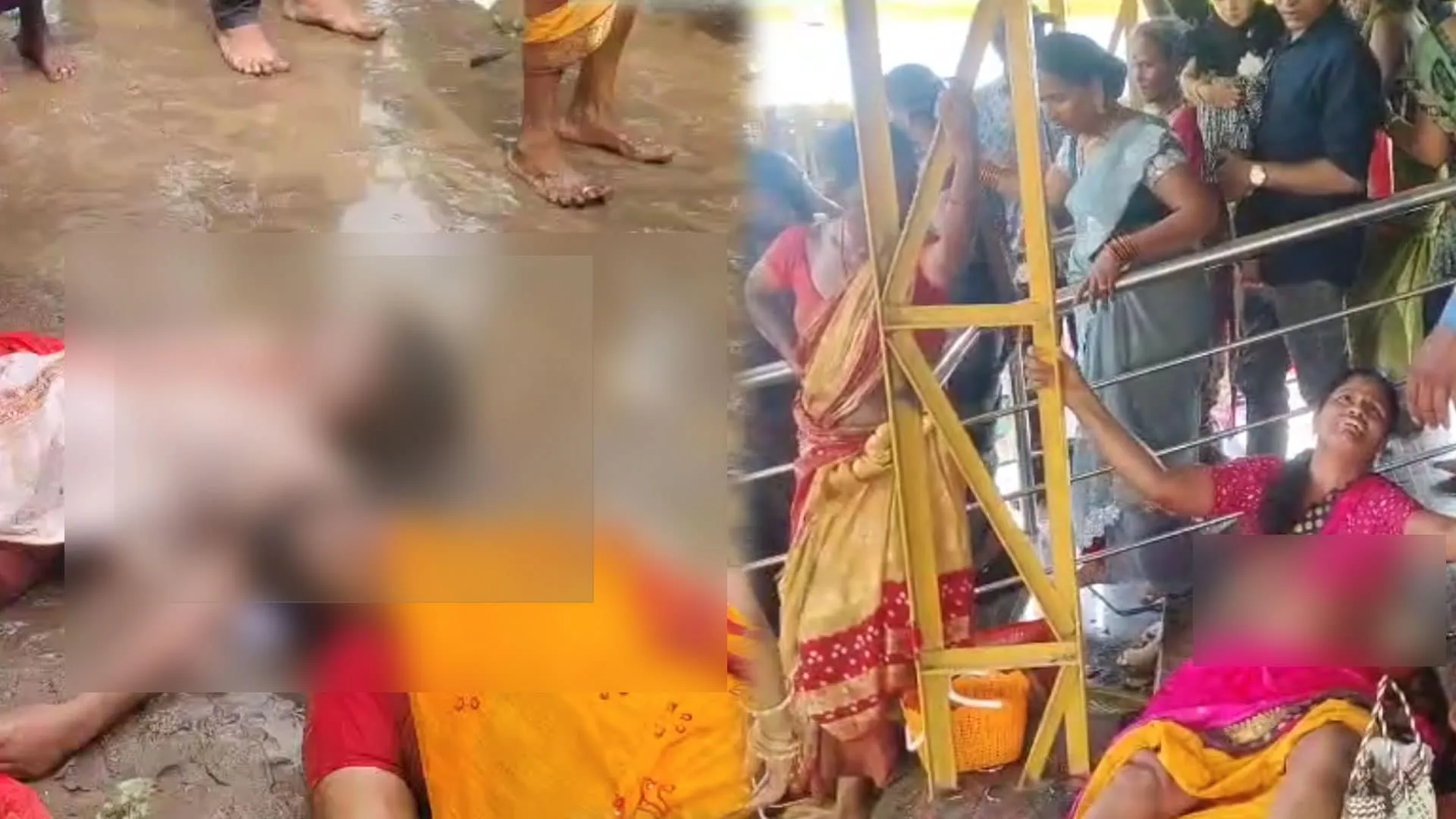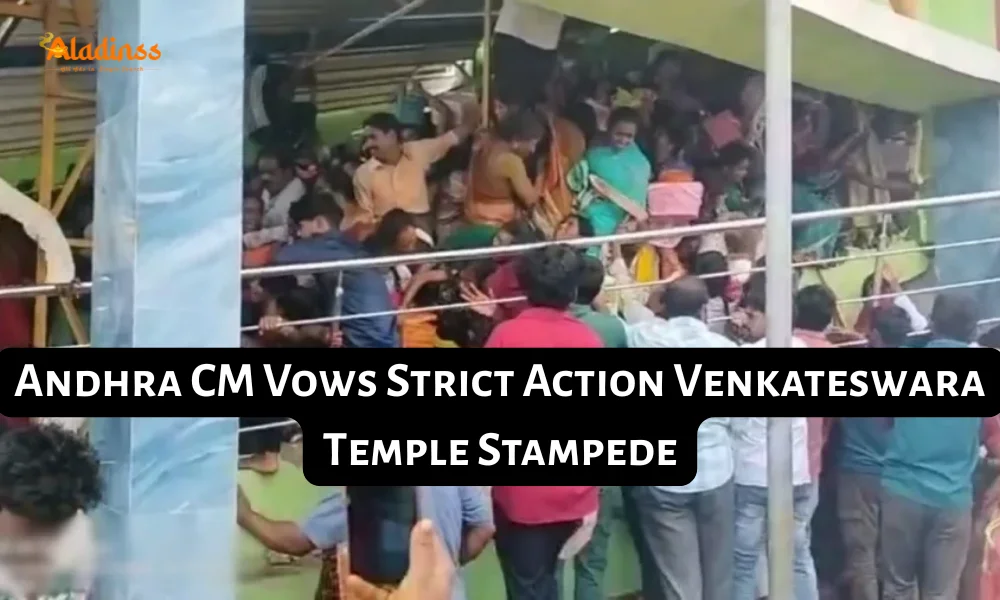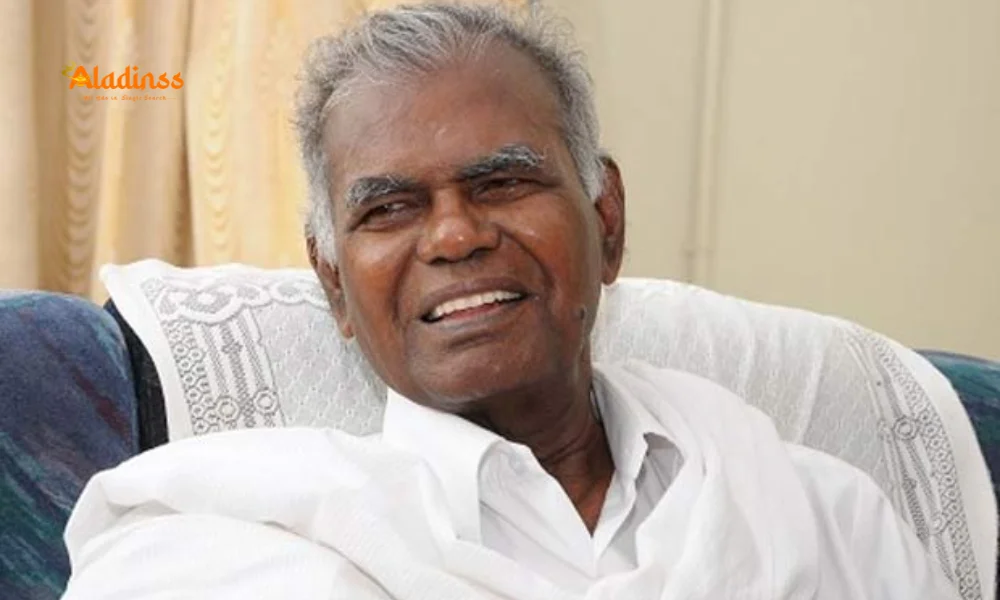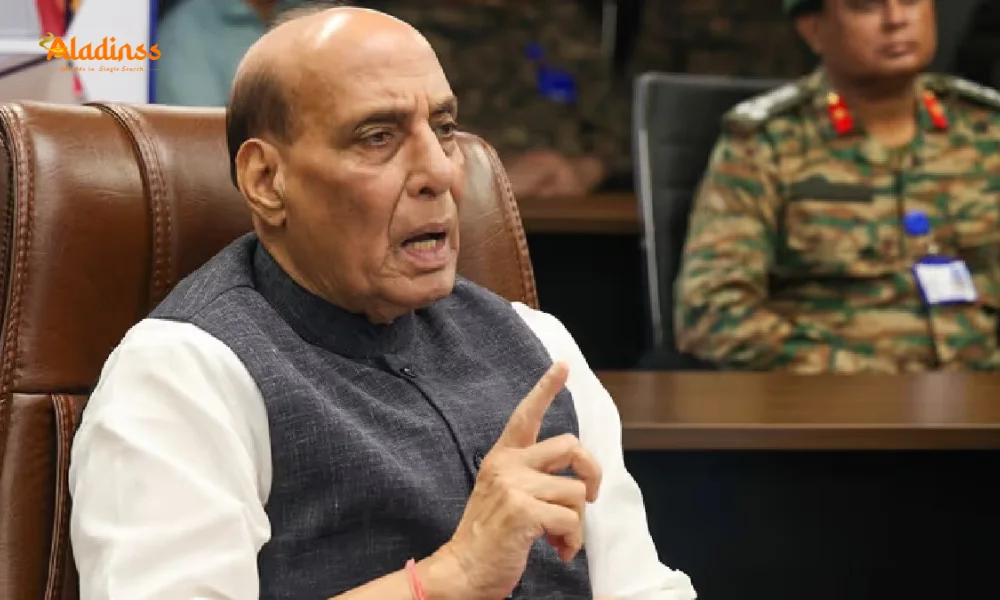Tragic Andhra Temple Stampede Kills 9: Shocking Causes Exposed Now

No Permits, Overcrowding, Single Exit: Inside the Devastating Andhra Temple Stampede
In a heart-wrenching turn of events during a sacred Ekadashi celebration, the Andhra temple stampede at the revered Sri Venkateswara Swamy temple in Kashibugga, Srikakulam district, has left the nation mourning. This tragic incident, which unfolded on a bustling Saturday, claimed the lives of at least nine devotees, including two innocent children, turning a day of spiritual solace into one of profound grief. The chaos erupted amid severe overcrowding, where nearly 25,000 pilgrims gathered, far exceeding the venue's capacity. Authorities have pinpointed critical safety lapses, such as the absence of government permits and inadequate crowd management, as primary causes behind this Andhra tragedy. As investigations deepen, questions swirl about how a private temple, affectionately called "Chinna Tirupati," could host such a massive event without proper oversight.
Eyewitnesses recount a scene of utter pandemonium: devotees jostling in narrow queues, barricades buckling under immense pressure, and panic spreading like wildfire. The temple stampede in Andhra Pradesh highlights a recurring nightmare in India's religious gatherings, where devotion often collides with dangerously lax planning. Families shattered by loss demand accountability, while survivors grapple with injuries and trauma. This Srikakulam temple tragedy underscores the urgent need for robust regulations on private religious sites, ensuring that faith-based events prioritize safety over unchecked enthusiasm.
Preliminary probes reveal that organizers neither sought nor obtained necessary approvals from district authorities, allowing the event to proceed in an under-construction zone fraught with hazards. The single entry-exit point exacerbated the crush, trapping hundreds in a deadly bottleneck. As relief efforts intensify, Chief Minister N. Chandrababu Naidu has vowed a thorough inquiry, vowing to prevent future religious tragedies. This Andhra temple stampede serves as a stark reminder: without stringent crowd control measures, even the most pious occasions can descend into catastrophe.

The Perils of Unregistered Private Temples
At the core of this Andhra temple stampede lies a fundamental oversight: the Sri Venkateswara Swamy temple operates as a private entity, unregistered under the Andhra Pradesh Endowments Department's stringent guidelines. This lack of official affiliation meant no mandatory safety audits, no crowd estimation protocols, and certainly no emergency response drills were in place. Organizers, buoyed by the temple's reputation as a "Little Tirupati," assumed the influx of devotees on Ekadashi would be manageable without alerting local administration. This glaring absence of permits not only violated state laws but also blinded authorities to the scale of the gathering. In essence, the event proceeded in a regulatory vacuum, where devotion trumped due diligence.
Private temples like this one dot the landscape of Andhra Pradesh, drawing thousands seeking spiritual respite. Yet, without government oversight, they often skirt essential safety norms. Experts in crowd dynamics point out that unregistered sites frequently underestimate risks, leading to improvised arrangements that crumble under pressure. In this case, the failure to notify the district collector's office about the expected 25,000 attendees allowed the tragedy to brew unchecked. As one local devotee lamented, "We came for blessings, not to fight for breath." This Srikakulam incident amplifies calls to bring all private religious establishments under a unified regulatory umbrella, mandating pre-event clearances and on-site monitoring.
Historical parallels abound, with similar lapses fueling past religious tragedies across India. From the 2013 Ratangarh temple stampede in Madhya Pradesh, which killed 115 during Navratri, to the 2024 Hathras satsang crush claiming over 100 lives, unregistered venues have repeatedly proven deadly. Bridging this gap requires not just enforcement but education-temple committees must be trained in basic risk assessment. Until then, the faithful remain vulnerable to the whims of unprepared hosts.
Hazards in an Under-Construction Environment
Compounding the regulatory void was the temple's physical state: the assembly area was mired in ongoing construction, transforming a sacred space into a deathtrap. Piles of debris, half-erected structures, and uneven terrain created invisible perils for the throng of pilgrims navigating the grounds. Despite these evident dangers, entry was permitted without hesitation, as if the divine aura overshadowed earthly precautions. This under-construction zone in the heart of the Andhra temple stampede amplified every misstep, from slippery paths that caused initial slips to exposed wiring that heightened panic.
Construction sites demand isolation during public events, yet here, workers and worshippers coexisted in a hazardous blur. Reports indicate that no temporary barriers segregated the build area, allowing dust clouds and tool clutter to disorient the crowd. Safety engineers reviewing the site post-incident noted that proper zoning could have averted much of the chaos. In a state like Andhra Pradesh, where temple expansions are common to accommodate growing flocks, such oversights are inexcusable. The Ekadashi rush, already swelling beyond norms, turned these construction flaws into fatal catalysts.
Broader context reveals a pattern: many religious sites prioritize aesthetics over safety during upgrades. A 2025 study by the National Disaster Management Authority highlighted that 40% of temple-related incidents in India occur in partially built areas. To mitigate this, mandates for halting work during peak festivals and conducting structural integrity checks are imperative. The Srikakulam temple tragedy demands immediate action-perhaps a statewide audit of construction-impacted shrines-to safeguard future gatherings.
Ekadashi Overcrowding and the Barricade Breakdown
Ekadashi, a day of fasting and fervent prayer in Hindu tradition, routinely swells temple footfall, but this year's observance at Chinna Tirupati spiraled into disaster. Saturdays alone draw 10,000 to 15,000 devotees, yet the holy convergence pushed numbers to 25,000-an overwhelming surge that overwhelmed frail infrastructure. The overcrowding in Andhra temple began innocuously in the women's queue, where eager pilgrims pressed forward for darshan. But as space dwindled, the makeshift barricades-little more than flimsy ropes and poles-succumbed to the human tide, triggering falls and a domino effect of dread.
Witnesses describe a surreal shift: joyous chants giving way to screams as bodies piled in the melee. The barricade collapse not only injured dozens but ignited widespread panic, turning orderly lines into a frenzied escape. Crowd management experts attribute this to poor capacity planning; venues like this require dynamic monitoring tools, such as thermal cameras for real-time counts, which were absent. In Andhra Pradesh, where festivals blend seamlessly with daily life, scaling security for peak days is non-negotiable.
To grasp the severity, consider India's grim ledger of temple stampedes. Here's a brief overview of notable cases:
- January 2025: Six fatalities at a Uttarakhand temple due to electric wire mishaps amid crowds.
- May 2025: Shirgao, Goa-seven deaths in a 40,000-strong gathering at Shree Lairai Devi Temple.
- July 2024: Hathras, UP-over 100 lost in a satsang stampede from overcrowding.
- October 2013: Ratangarh, MP-115 perished during Navratri festivities.
- January 2025: Maha Kumbh, Prayagraj-30 killed in a massive pilgrim crush.
Each echoes the Ekadashi overcrowding here: unchecked numbers breeding inevitable tragedy. Prevention hinges on predictive analytics-forecasting attendance via apps and capping entries accordingly. The Andhra case, with its barricade failure, urges a national protocol for reinforced crowd dividers tested to withstand 50,000 psi pressure.
The Deadly Single Access Point Dilemma
Perhaps the most egregious flaw in this Andhra temple stampede was the solitary entry-exit gateway-a narrow chokepoint that funneled inflows and outflows into a perilous convergence. As the crush intensified, escaping devotees collided with incoming ones, worsening the congestion and sealing fates. Families torn apart in the surge watched helplessly as loved ones vanished into the human wave. This single exit configuration not only prolonged the panic but crippled initial rescue attempts, with ambulances delayed by the very bottleneck they aimed to breach.
Urban planners decry such designs as archaic relics, unfit for modern gatherings. International standards, like those from the UN's crowd safety guidelines, advocate multiple, clearly marked egress points scaled to occupancy. In Srikakulam, retrofitting the Venkateswara Swamy temple with at least three dedicated lanes could have halved evacuation times. Survivor accounts paint a vivid horror: children separated, elders trampled, all because one path bore the burden of thousands. This one exit temple tragedy exposes a systemic indifference to flow dynamics in sacred spaces.
Addressing this requires architectural interventions-widening portals, installing one-way signage, and deploying stewards at junctions. Coupled with the construction woes, it formed a perfect storm, but lessons from global events, such as the 2021 Hajj improvements post-stampedes, show reform is feasible. India's temples must evolve, blending reverence with resilience.
Swift Government Response and Ongoing Relief
In the tragedy's aftermath, Andhra Pradesh's leadership mobilized rapidly. Minister Nara Lokesh, spearheading relief through the Revenue, Transport, and Goods Services department, coordinated medical evacuations and on-ground aid. He is slated to inspect the site personally, ensuring comprehensive support for bereaved families. Chief Minister N. Chandrababu Naidu, expressing profound sorrow, instructed health officials to provide top-tier care for the 50-plus injured, many battling crush injuries and fractures at district hospitals.
A high-level inquiry committee, comprising police, endowments experts, and safety consultants, has been formed to dissect the lapses within 30 days. Naidu emphasized, "No stone will be left unturned to honor the departed and heal the wounded." Compensation packages-up to ₹5 lakh per family-have been announced, alongside psychological counseling hubs. This proactive stance contrasts with slower responses in past incidents, signaling a maturing crisis framework in the state.
Yet, relief alone falls short; the government's blueprint must extend to preventive tech, like AI-driven crowd alerts piloted in Tirupati. Lokesh's visit will likely spotlight infrastructure upgrades, fostering a safer devotional ecosystem.
Igniting Calls for Nationwide Temple Reforms
The ripples of this Srikakulam temple tragedy extend far beyond Andhra, igniting fervent demands for overhauling private religious establishments. Activists and faith leaders alike decry the patchwork of regulations, urging a central act to standardize safety across India's 4 million temples. Key proposals include mandatory registration drives, annual capacity audits, and integrated emergency apps linking venues to local responders. Without these, religious tragedies will persist, eroding trust in sacred sanctuaries.
Public outrage manifests in social media campaigns and protests, with hashtags like #TempleSafetyNow trending. Religious scholars advocate blending tradition with technology-drones for aerial oversight, VR simulations for crowd drills. Economically, safer sites could boost tourism; Tirupati's model, with its tiered queuing, generates billions while minimizing risks. The Ekadashi stampede, with its cascade of failures, could catalyze this shift if policymakers act decisively.
Looking ahead, community involvement is vital: devotee cooperatives could fund safety enhancements, while schools incorporate stampede awareness in curricula. International collaborations, drawing from Mecca's protocols, offer blueprints. Ultimately, this Andhra temple stampede isn't just a local lament-it's a clarion call for a safer spiritual India, where faith flourishes unmarred by fear.
As the inquiry unfolds, one truth resonates: prevention is the truest prayer. By honoring the lost through reform, we can transform grief into guardianship, ensuring no family endures the void of a preventable loss. The path forward demands vigilance, innovation, and unwavering commitment to the devotees who sustain these timeless traditions.
Comment / Reply From
No comments yet. Be the first to comment!











